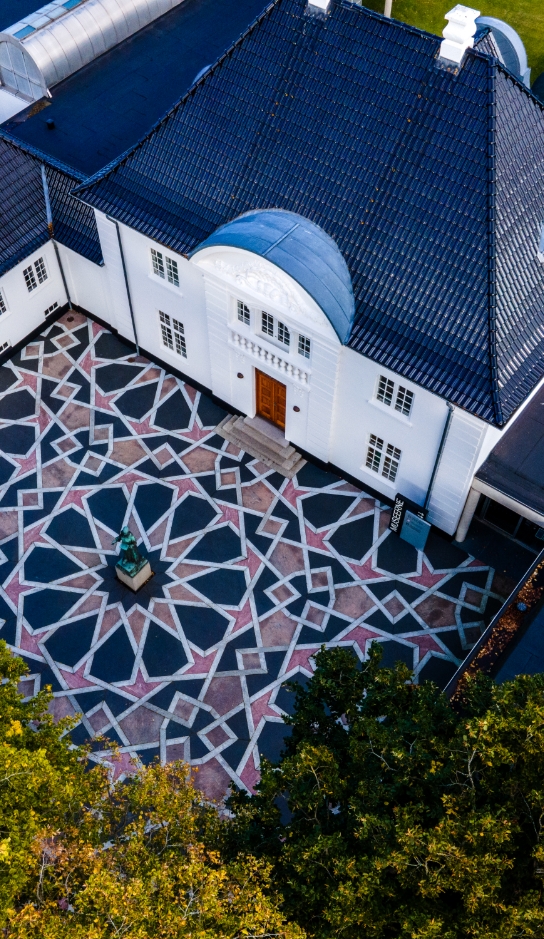Anna Thommesen
Collection
Anna Thommesen (1908-2004) was self-taught, both as a weaver and as an artist. She painted from childhood, but weaving became her preferred medium of expression from the 1940s on. Thommesen performed all steps of the weaving process herself and learned to dye her own yarn using the plants of nature.
The exhibition shows a selection of Thommesen’s works from the 1940s to the 1990s. Visitors can follow the whole process from watercolour study and pattern drawing to yarn sample and finished
tapestry, and see examples of her yarn cards.
Of the 53 watercolour studies in the museum’s possession, the majority were used as designs for both well-known and unknown tapestries located around Denmark. However, with their colouristic refinement and ornamental imagination, the small watercolour studies can also be considered works in their own right, and a selection of these can also be seen in the exhibition.
Geometry and symmetri
In 1943, Anna Thommesen made her debut with rag rugs at the Artists’ Autumn Exhibition, and later, she was represented at Linien II (1947) and the Colourists’ exhibtion (1948). In 1952 she became a member of the artists’ association the March Exhibition, at the invitation of the group’s painters, who saw painterly qualities in her work. In 1972 she receives the Eckersberg Medal.
Initially, Thommesen’s patterns were dominated by complementary colours and geometrical shapes, in compositions which often resemble the expressions of indigenous cultures, such as Peruvian rugs. Up through the 1970s and onwards, an ever greater degree of simplicity and a monochrome colour scheme emerges, in which a single colour dominates and is modelled with great precision. In Thommesen’s work, the patterns are usually symmetrical around both the vertical and horizontal axes.
The metaphors of nature
Thommesen’s woven images are entirely abstract, but through the wool of the yarn and the colours of the plants, as well as such titles as "Yew" or "Winter", they convey concrete references to nature’s diversity and growth. The works become poetic metaphors for the Danish landscape, where the divisions of fields of corn, the colours of sunsets, and the waves and horizon lines of the sea form nature’s ornamentation.
Thommesen always exhibited her works wall-hung. As such, they can be said to be located somewhere between the surfaces of painting and the objects produced by craftwork. However, there are several examples in which they have also served as rugs, and have thereby taken on a more distinctive utilitarian character.
The rythm of colour
When Anna Thommesen began her working process, she started with colour. The colour determined the rhythm of the tapestry, creating an inner coherence in which colour and pattern balanced each other and formed a harmonious whole.
First of all, Thommesen would paint a watercolour study of the tapestry she intended to weave. After that came a technical pattern drawing on graph paper, with measurements and, occasionally, notes about colours and colour codes. In general, Thommesen worked with great thoroughness.
Anna Thommesen has created a number of striking decorative works, such as for the old parliament chamber at Christiansborg (1969-72) and the altar cloth, kneeler and antependium for Roskilde Cathedral (1977). A number of her tapestries can also be found in Holstebro Town Hall. Holstebro Kunstmuseum’s collection consitutes the main representation of Thommesen’s work.
Thommesens billedtæpper er helt abstrakte, men bærer gennem garnets uld og plantefarverne, samt titler såsom Taks eller Vinter, helt konkrete henvisninger til den natur, de alligevel synes så forbundne med.

